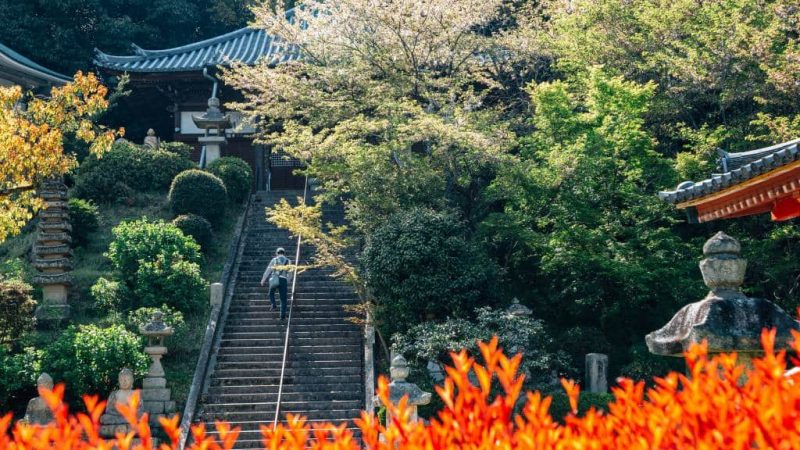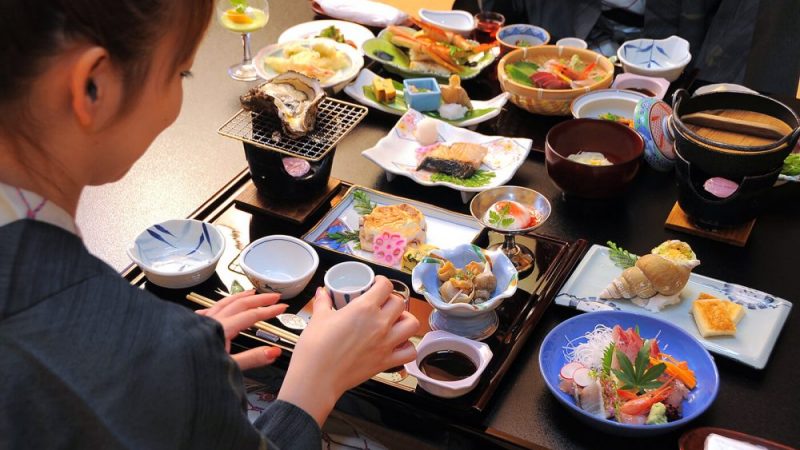Sampling Authentic Flavors on a Culinary Journey Abroad
Embarking on a culinary journey abroad is one of the most immersive and rewarding ways to explore a new destination. From savoring aromatic spices in bustling markets to indulging in hearty home-cooked meals with local families, traditional cuisine offers a window into the culture, history, and identity of a place. Across the globe, adventurous travelers seek out authentic flavors, sampling regional specialties and culinary traditions that have been passed down through generations.
In Italy, the land of pasta and pizza, traditional cuisine is a celebration of fresh, locally sourced ingredients and time-honored cooking techniques. From the creamy risottos of northern Italy to the hearty ragus of the south, each region boasts its own distinct culinary heritage. Visitors to Italy can indulge in a mouthwatering array of dishes, from delicate seafood pastas along the Amalfi Coast to rustic Tuscan stews in the heart of Tuscany. And let’s not forget about the gelato – Italy’s iconic frozen treat that comes in endless flavors and variations, each more delicious than the last.
In Thailand, the vibrant street food scene is a feast for the senses, with bustling markets and food stalls serving up an array of bold flavors and exotic ingredients. From spicy curries and tangy salads to fragrant stir-fries and crispy spring rolls, Thai cuisine is a tantalizing blend of sweet, sour, salty, and spicy flavors. Visitors to Thailand can explore the diverse culinary landscape, sampling regional specialties such as pad Thai in Bangkok, khao soi in Chiang Mai, and som tam in Isaan. And don’t forget to wash it all down with a refreshing glass of Thai iced tea or coconut water – the perfect antidote to the heat of the tropics.
In Japan, traditional cuisine is a delicate art form, with a focus on simplicity, seasonality, and presentation. From the elegant sashimi of Tokyo to the comforting bowls of ramen in Kyoto, Japanese cuisine is a reflection of the country’s rich cultural heritage and reverence for nature. Visitors to Japan can experience the magic of a traditional kaiseki meal, a multi-course feast that showcases the freshest seasonal ingredients in exquisite dishes such as sushi, tempura, and grilled fish. And for a truly unforgettable experience, why not try your hand at making sushi or soba noodles in a hands-on cooking class?
In Mexico, traditional cuisine is a vibrant tapestry of flavors, colors, and textures, with influences from indigenous, Spanish, and African cultures. From the smoky flavors of Oaxacan mole to the fiery heat of Yucatecan habanero, Mexican cuisine is as diverse as the country itself. Visitors to Mexico can explore the bustling markets and street stalls, sampling regional specialties such as tacos al pastor in Mexico City, ceviche in Baja California, and tamales in Chiapas. And no trip to Mexico would be complete without indulging in a refreshing margarita or ice-cold cerveza – the perfect accompaniment to a spicy meal.
In India, traditional cuisine is a symphony of spices, with each dish bursting with flavor and aroma. From the fragrant biryanis of Hyderabad to the fiery curries of Kerala, Indian cuisine is a testament to the country’s rich culinary heritage and cultural diversity. Visitors to India can embark on a culinary journey through the country’s diverse regions, sampling street food snacks such as samosas and pakoras, indulging in hearty thali meals with an array of curries, rice, and breads, and savoring sweet treats such as gulab jamun and jalebi. And for those looking to learn the secrets of Indian cooking, why not take a cooking class with a local chef and master the art of making perfect chapatis and masalas?
In France, traditional cuisine is a celebration of simplicity, elegance, and seasonal ingredients. From the buttery croissants of Paris to the savory coq au vin of Burgundy, French cuisine is a culinary delight that has captivated food lovers around the world. Visitors to France can explore the country’s diverse culinary landscape, sampling regional specialties such as bouillabaisse in Marseille, cassoulet in Toulouse, and tarte flambée in Alsace. And of course, no trip to France would be complete without indulging in a glass of wine or champagne – the perfect accompaniment to a leisurely meal in a charming bistro or brasserie.
In Greece, traditional cuisine is a celebration of fresh, Mediterranean flavors, with an emphasis on olive oil, herbs, and seafood. From the tangy tzatziki of Crete to the hearty moussaka of Santorini, Greek cuisine is a tantalizing blend of sweet, salty, and savory flavors. Visitors to Greece can explore the country’s bustling markets and seaside tavernas, sampling regional specialties such as souvlaki in Athens, spanakopita in Thessaloniki, and baklava in Rhodes. And for a taste of true Greek hospitality, why not join a local family for a traditional meal and experience the warmth and generosity of Greek culture firsthand?
In China, traditional cuisine is a diverse and flavorful tapestry of regional specialties, with influences from Cantonese, Sichuanese, and Shanghainese cuisines. From the fiery heat of Sichuan hot pot to the delicate flavors of Cantonese dim sum, Chinese cuisine offers something for every palate. Visitors to China can embark on a culinary journey through the country’s diverse regions, sampling street food snacks such as jianbing and baozi, indulging in hearty noodle soups and stir-fries, and savoring sweet treats such as mooncakes and sesame balls. And for those looking to learn the secrets of Chinese cooking, why not take a cooking class with a local chef and master the art of making perfect dumplings and stir-fries?
In Spain, traditional cuisine is a celebration of bold flavors, fresh ingredients, and communal dining. From the savory paellas of Valencia to the smoky tapas of Andalusia, Spanish cuisine is a culinary adventure that delights the senses. Visitors to Spain can explore the country’s bustling markets and tapas bars, sampling regional specialties such as gazpacho in Seville, jamón ibérico in Madrid, and pintxos in San Sebastián. And for a taste of true Spanish hospitality, why not join a local fiesta or feria and experience the vibrant energy and festive spirit of Spanish culture firsthand?
In Brazil, traditional cuisine is a reflection of the country’s diverse cultural heritage, with influences from indigenous, African, and Portuguese cuisines. From the savory feijoadas of Rio de Janeiro to the sweet brigadeiros of São Paulo, Brazilian cuisine is a melting pot of flavors and textures. Visitors to Brazil can explore the country’s bustling markets and churrascarias, sampling regional specialties such as moqueca in Bahia, pão de queijo in Minas Gerais, and acarajé in Salvador. And for those looking to experience the lively rhythms and vibrant colors of Brazilian culture, why not join a samba dance class or capoeira workshop and immerse yourself in the spirit of Carnaval?
In Morocco, traditional cuisine is a feast for the senses, with flavors that are bold, aromatic, and exotic. From the fragrant tagines of Marrakech to the spicy couscous of Casablanca, Moroccan cuisine is a culinary journey through the country’s rich cultural heritage and diverse landscapes. Visitors to Morocco can explore the bustling souks and street stalls, sampling regional specialties such as harira in Fez, pastilla in Rabat, and mint tea in Tangier. And for those looking to learn the secrets of Moroccan cooking, why not take a cooking class with a local chef and master the art of making perfect tagines and couscous dishes?
In Vietnam, traditional cuisine is a celebration of fresh herbs, bold flavors, and vibrant colors, with influences from Chinese, French, and Southeast Asian cuisines. From the savory pho of Hanoi to the crispy banh mi of Ho Chi Minh City, Vietnamese cuisine is a culinary adventure that delights the senses. Visitors to Vietnam can explore the country’s bustling markets and street stalls, sampling regional specialties such as bun cha in Hanoi, cao lau in Hoi An, and banh xeo in Hue. And for those looking to learn the secrets of Vietnamese cooking, why not take a cooking class with a local chef and master the art of making perfect spring rolls and noodle soups?
In Turkey, traditional cuisine is a fusion of flavors from the Middle East, Mediterranean, and Central Asia, with influences from Ottoman, Persian, and Arabic cuisines. From the savory kebabs of Istanbul to the sweet baklava of Gaziantep, Turkish cuisine is a culinary journey through the country’s rich cultural heritage and diverse landscapes. Visitors to Turkey can explore the bustling markets and meyhanes, sampling regional specialties such as kofte in Bursa, manti in Kayseri, and lahmacun in Antalya. And for those looking to experience the warm hospitality and vibrant culture of Turkey, why not join a traditional Turkish tea ceremony or folk dance performance and immerse yourself in the sights, sounds, and flavors of this fascinating country?
Embarking on a culinary journey abroad is a delicious and immersive way to explore a new destination and connect with its culture, history, and identity. Whether you’re savoring pasta in Italy, sampling street food in Thailand, or indulging in tapas in Spain, traditional cuisine offers a window into the soul of a place, allowing travelers to experience the flavors and aromas that make each destination unique. So pack your bags, sharpen your taste buds, and prepare to embark on a culinary adventure of a lifetime – you never know what delicious delights await you on the road less traveled.


